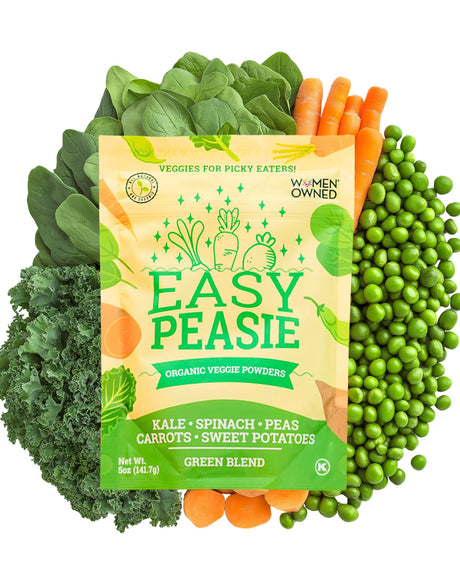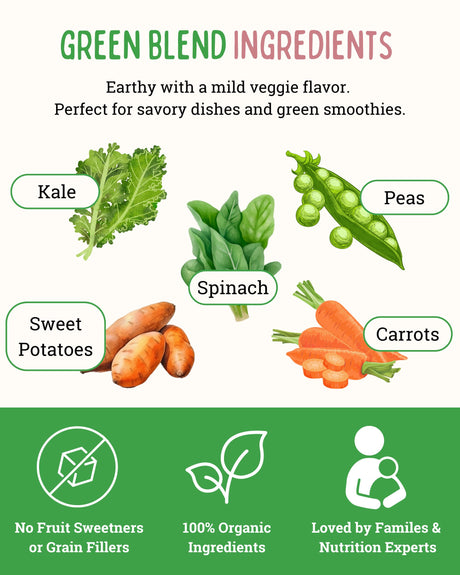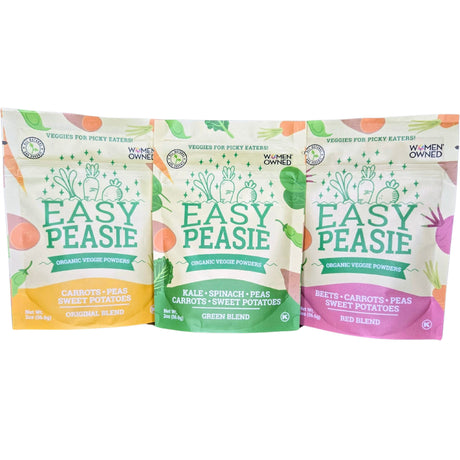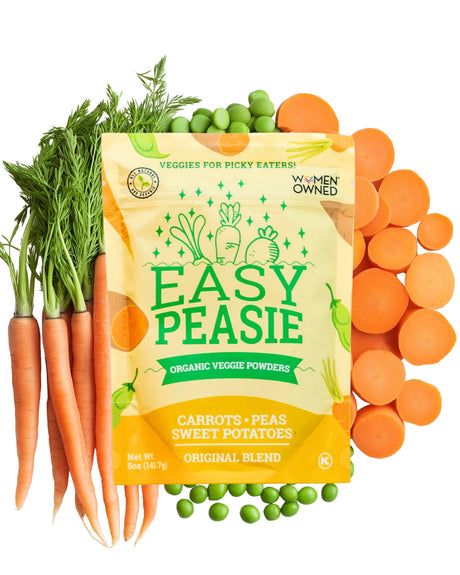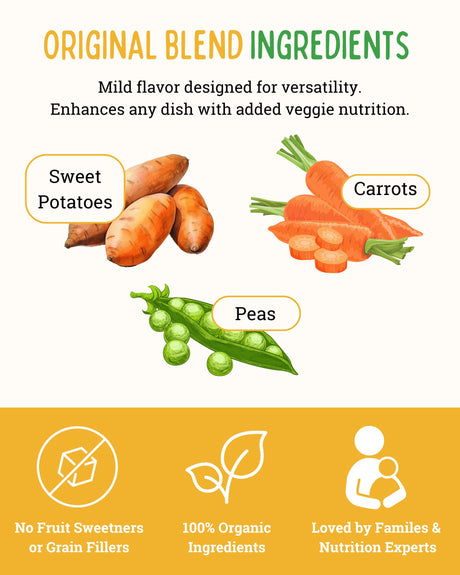Another morning, another internal debate about whether to pack the exact same lunch as yesterday. Again. You could probably pack your child's lunchbox with your eyes closed by now: the faithful turkey sandwich (cut just right), those apple slices they might eat if you're lucky, and the goldfish crackers that disappear like magic.
Meanwhile, you're scrolling through social media seeing those Instagram-worthy bento boxes with rainbow vegetables arranged like works of art, and you can't help but wonder if you're somehow failing the "good parent" test.
But here's what those perfectly curated lunch photos don't show: the thirty minutes of prep time, the disappointed kid who won't touch the beautiful creation, or the parent frantically packing backup snacks because nothing got eaten.
If you're tired of the lunchbox guilt cycle and ready to redefine what success actually looks like for your picky eater, you're in the right place. Because the truth is, successful school lunches aren't about impressing other parents or achieving nutritional perfection – they're about finding strategies that work for your unique child and give you peace of mind.
Understanding the School Lunch Challenge
Why Lunchtime at School is Different
School lunch presents a unique set of challenges that don't exist at home. Your child is eating in a noisy cafeteria, surrounded by distractions, with limited time and zero parental encouragement. They can't ask for their sandwich to be reheated or request their favorite cup.
For picky eaters, this environment can feel overwhelming. The child who might eventually try a new food at home after seeing it multiple times may completely shut down when faced with unfamiliar items in their lunchbox.
Understanding this helps explain why your carefully packed variety lunch comes home mostly untouched, while the "boring" lunch gets eaten completely.
The Pressure to Pack Perfectly
Social media doesn't help, does it? Those Instagram-worthy lunchboxes with rainbow carrots arranged in flower shapes and homemade energy bites can make even the most confident parent feel inadequate.
But here's what those pictures don't show: the thirty minutes of prep time each morning, the frustrated child who refuses to eat the beautiful creation, or the backup snacks hidden in the bottom of the bag.
Real life lunchbox success looks different for every family. For some, it's a child who eats anything you pack. For others, it's celebrating when they eat two out of three items. Both are wins.
Building Your Picky Eater's Lunch Foundation
The Three-Food Strategy (And Why It's Actually Okay)
Let's start with some good news: if your child consistently eats three foods at lunch, you're doing better than you think. Many feeding experts actually recommend this approach for building confidence and reducing anxiety around school meals.

The key is making sure those three foods work together:
The Safe Food: Something you know they'll eat 90% of the time. This might be a particular sandwich, crackers, or fruit they love.
The Comfort Food: An item that provides emotional comfort during the stress of the school day. Think of their favorite snack or a special note from home.
The Adventure Food: One small item that gently stretches their comfort zone. This could be a new flavor of their favorite crackers or a fruit they've been curious about.
This approach takes pressure off both you and your child while still creating opportunities for growth.
Creating Positive Food Associations
School lunch success often depends on creating positive associations with the foods you pack. This means thinking beyond just nutrition to consider your child's emotional needs too.
Familiarity Wins: Pack foods that feel safe and familiar. If they love a particular brand of crackers, stick with it rather than trying the organic version that looks identical to you but feels different to them.
Temperature Matters: Consider how foods will feel and taste after sitting in a lunchbox for hours. That warm sandwich that's perfect at home might not be appealing at room temperature.
Packaging Counts: Use containers and packaging that your child can easily open independently. Nothing ruins lunch like struggling with a stubborn container while friends are finishing eating.
Strategic Lunch Expansions That Actually Work
The One-Bite Rule for School
Trying new foods at school is harder than at home, so adjust your expectations accordingly. Instead of hoping they'll love something new, aim for curiosity or just tolerance.
Tiny Portions: Include just a few pieces of something new rather than a full serving. Three grapes instead of a whole container. Two baby carrots instead of a bag full.
Familiar Presentations: If they like apple slices at home, try pear slices cut the same way. If they enjoy crackers, introduce a new shape of the same brand.
No Pressure Notes: Include a note that says "Try if you want to" or "Save for later if you're not ready." This removes the pressure while keeping the option open.
The Rotation Method
Once you've identified foods your child will eat at school, create a rotation system to prevent boredom without overwhelming them with choices.
Monday/Wednesday/Friday: Turkey sandwich, string cheese, applesauce
Tuesday/Thursday: Peanut butter crackers, grapes, granola bar
This gives variety without the stress of daily decision-making, and your child knows what to expect.
Building on Success
When your child does try something new or eats more than usual, build on that success gradually:
More of the Same: If they ate half their sandwich instead of just the filling, pack the same sandwich again before trying variations.
Gentle Variations: Once a food is accepted, try tiny changes. Different bread for the same sandwich. Same fruit in a different cut.
Positive Reinforcement: Celebrate the wins without making a huge fuss. A simple "I noticed you tried the carrots!" is often more effective than throwing a party.
Practical Lunchbox Solutions for Real Families
Time-Saving Prep Strategies
Sunday Prep Session: Wash and cut fruits and vegetables for the week. Pre-make sandwiches and freeze them (they'll thaw by lunchtime).
Assembly Line Method: Set up all components and pack multiple lunches at once. This works especially well if you have multiple children or want to prep several days ahead.
Backup Plans: Keep shelf-stable backup items in your pantry for crazy mornings. Individual applesauce cups, crackers, and granola bars can save the day.
Temperature and Food Safety Solutions
Ice Packs and Insulation: Invest in good lunch boxes with proper insulation. Cold foods should stay cold, and room temperature foods should remain safe.
Safe Food Choices: Stick to foods that are safe at room temperature or pack items that handle temperature changes well. Avoid foods that become unappetizing when they're not at the ideal temperature.
Thermos Options: For children who prefer warm foods, a good thermos can expand your options to include soups, pasta, or heated leftovers.
Making Lunch Special Without Stress
Personal Touches: Include a drawing, joke, or encouraging note. These don't add prep time but make lunch feel special.
Special Containers: Let your child pick out their lunch containers or water bottle. Having ownership over these choices can increase enthusiasm.
Theme Days: Occasionally create simple themes like "yellow foods" or "circle foods" using items they already like.
Addressing Common Lunchbox Challenges
When Everything Comes Home Uneaten
This is heartbreaking and frustrating, but it's also incredibly common. Before you panic, consider these factors:
Timing Issues: Some children eat very little at lunch because they're still full from breakfast or prefer to eat their main meal at home.
Social Distractions: The excitement of being with friends might override hunger. This often improves as children adjust to the school routine.
Overwhelm: Too many choices or unfamiliar foods can cause some children to shut down completely.
Solutions to Try:
- Simplify to one or two items they definitely like
- Ask your child what happened - they might have insights you haven't considered
- Check if they're eating breakfast too close to lunchtime
- Consider if they're drinking too many liquids and feeling full
Dealing with Food Envy
Your child comes home asking why they can't have the "fun" foods like their classmates. This is tough, especially when you're already doing your best to accommodate their preferences.
Acknowledge Their Feelings: "It sounds like Sarah's lunch looked really interesting to you."
Focus on Their Needs: "We pack foods that help your body feel good and that you enjoy eating."
Offer Compromises: If there's something specific they're interested in, consider whether it could work as an occasional addition or weekend treat.
Celebrate Their Lunch: Help them feel proud of what they do eat rather than focusing on what others have.
Managing Teacher and Peer Pressure
Sometimes well-meaning teachers or friends comment on lunch contents, which can create additional stress for picky eaters.
Educate When Needed: If necessary, have a conversation with your child's teacher about your child's eating needs.
Prepare Your Child: Give them simple responses like "This is what works for my body" or "My family packs foods I like."
Focus on Function: Remind your child that the goal of lunch is to fuel their body for learning and playing, not to impress anyone.
Sneaky Nutrition Strategies That Work at School
Easy Peasie's Veggie Powder Blends work particularly well for school lunches because they can be mixed into familiar foods without changing the appearance or texture dramatically.
Sandwich Enhancements: Mix a small amount of Easy Peasie Original Blend into cream cheese or butter before spreading on sandwiches. The mild flavor blends seamlessly while adding real vegetable nutrition.
Snack Upgrades: Stir veggie powder into applesauce, yogurt, or even mix it into homemade muffins that you bake over the weekend.

Familiar Food Boosting: Add Easy Peasie to foods your child already accepts at school - their favorite crackers with cheese, pasta salad, or even mixed into peanut butter.
Hidden Nutrition Without the Stress
The beauty of using veggie powder blends for school lunches is that they remove the pressure from both you and your child. You know they're getting real vegetable nutrition, and your child can eat their familiar foods without stress.
Start Small: Begin with just a few shakes of Easy Peasie in their most accepted foods. You can gradually increase the amount as their palate adjusts.
Consistency is Key: Use the same amount in the same foods for several weeks before making changes. This helps establish the new flavor as part of their "normal."
Don't Announce It: Let the nutrition work quietly in the background while your child focuses on enjoying their lunch.
Building Bridges to Whole Foods
Think of veggie powder blends as training wheels for vegetable acceptance. As your child's palate becomes familiar with these flavors, they may become more curious about whole vegetables over time.
Exposure Without Pressure: Pack a few sugar snap peas or cherry tomatoes alongside their enhanced lunch. No pressure to eat them, just exposure to the idea.
Connect the Dots: When they show interest in whole vegetables, you can mention that some of those flavors are similar to what's in their favorite enhanced foods.
Celebrate Progress: Any movement toward vegetable curiosity is worth acknowledging, even if actual eating is still far away.
Working with Your Child's School
Communicating with Teachers
Most teachers want to support your child's success, including around eating. A brief conversation can help them understand your child's needs.
What to Share:
- Your child tends to eat better with less pressure
- They're working on expanding their diet gradually
- Positive encouragement works better than pressure for your child
What to Ask:
- How much time do children have to eat?
- Is there a quiet space if your child gets overwhelmed?
- Are there any food restrictions in the classroom you should know about?
Understanding School Food Policies
Many schools have policies about food sharing, allergens, and what can be brought from home. Understanding these upfront can prevent surprises later.
Common Restrictions:
- Nut-free policies that affect what you can pack
- Rules about sharing food between students
- Requirements for store-bought items for classroom parties
Working Within the System: Most schools are accommodating when they understand a child has specific feeding needs. Don't be afraid to advocate for what your child needs to succeed.
Building Confidence and Independence
Teaching Self-Advocacy
Help your child develop language to talk about their food needs appropriately:
Simple Phrases:
- "I'm still learning to like new foods"
- "My family packs foods that work for me"
- "I eat different foods at home"
Problem-Solving Skills:
- What to do if they can't open a container
- How to ask for help when needed
- Who to talk to if there's a problem with their lunch
Encouraging Independence
Packing Together: Let your child help pack their lunch when possible. Even small choices like which fruit or which crackers can increase buy-in.
Lunch Feedback: Ask what worked and what didn't. Children often have insights about timing, temperature, or packaging that adults miss.
Gradual Responsibility: As children get older, they can take on more responsibility for their lunch success, from packing to making choices about what to include.
Seasonal Strategies and Special Situations
Back-to-School Transitions
The beginning of the school year is especially challenging for picky eaters. Everything is new and potentially overwhelming.
Start Familiar: Begin the year with only foods you know work well for your child. Save any experimentation until they're comfortable with the school routine.
Practice at Home: During the week before school starts, practice eating lunch foods in similar conditions - sitting at a table, with limited time, using their school lunch containers.
Gradual Adjustments: Once they're settled into the school routine, you can start making small changes or additions to their lunch.
Holiday and Special Event Lunches
Classroom parties and special events can be stressful for families of picky eaters.
Plan Ahead: Find out what will be served and consider sending familiar foods if needed.
Focus on Participation: The goal is for your child to feel included, not necessarily to eat everything offered.
Bring Backup: If appropriate, send a familiar snack that your child can eat if they're not comfortable with the party foods.
Field Trip and Extended Day Considerations
Extra Snacks: Pack more food than usual since schedules might be different.
Easy-to-Eat Options: Choose foods that don't require utensils or heating.
Communication: Make sure chaperones understand any special needs your child might have around eating.
Success Stories and Real-Life Examples
Small Wins That Matter
"My daughter used to only eat plain bread at lunch. After three months of adding tiny amounts of Easy Peasie to her butter, she started asking for 'the good butter' at home too. Now she'll eat it on toast, crackers, and even vegetables sometimes." - Maria, mom of 6-year-old
Progress Looks Different for Everyone
"We're still packing mostly the same foods, but now Jake eats everything instead of just picking at it. Having that nutrition boost from Easy Peasie in his sandwich gave me peace of mind to stop pressuring him about variety. Ironically, once I relaxed, he started being more curious about other foods." - David, dad of 8-year-old
Building Family Confidence
"The biggest change wasn't actually what Emma ate - it was how I felt about lunch. Knowing she was getting real vegetables made me stop stressing about the perfect lunch and start focusing on what actually worked for our family." - Jennifer, mom of 5-year-old
Creating Your Family's Lunch Success Plan
Week One: Assessment
Document Current Success: Write down everything your child currently eats reliably at school.
Identify Challenges: Note what comes home uneaten and try to understand why.
Consider Timing: Think about your morning routine and what's realistic for lunch prep.
Week Two: Optimization
Improve Current Favorites: Make small improvements to foods they already like. Better containers, ideal portions, preferred brands.
Add Nutrition Quietly: If appropriate, begin incorporating Easy Peasie into their most accepted foods.
Streamline Prep: Set up systems to make lunch packing easier and more consistent.
Week Three and Beyond: Gentle Expansion
Try One New Thing: Add one small new item while keeping everything else familiar.
Gather Feedback: Ask your child what's working and what isn't.
Celebrate Progress: Acknowledge any positive changes, no matter how small.
Looking Ahead: The Long View
Remember the Goal
The goal of school lunch isn't to create an adventurous eater overnight. It's to ensure your child has fuel for learning, feels confident about their food, and doesn't experience stress around eating.
Some children will naturally expand their school lunch repertoire over time. Others may eat limited variety at school but be more adventurous at home. Both paths are completely normal.
Building Lifelong Skills
The skills your child learns around school lunch - self-advocacy, independence, and understanding their own needs - will serve them far beyond elementary school.
Patience With the Process: Food acceptance is developmental and happens on each child's timeline.
Focus on Relationship: A positive relationship with food matters more than any specific food being eaten.
Trust Your Child: Children are generally good at eating what they need when pressure is removed and good options are available.
When to Seek Additional Support
If school lunch challenges are significantly impacting your child's growth, mood, or school experience, consider reaching out for professional support:
Pediatrician: For growth concerns or underlying medical issues School Counselor: For social or emotional challenges around eating Feeding Therapist: For significant sensory issues or extreme food restrictions Registered Dietitian: For nutrition concerns or meal planning support
Your Next Steps: From Lunchbox Stress to Success
This Week's Action Plan
Day 1-2: Assess your current lunch routine. What's working? What's causing stress?
Day 3-4: Simplify to focus on foods you know your child will eat at school.
Day 5-7: Consider how Easy Peasie might fit into your current successful foods to boost nutrition without changing what your child experiences.
Looking Forward
Remember, lunchbox success for picky eaters isn't about achieving perfection or matching what other families are doing. It's about finding what works for your unique child and family situation.
Your child doesn't need to eat a rainbow of foods at school to be healthy and happy. They need to feel confident, get adequate nutrition, and have positive experiences around food.
Take a deep breath. You're doing better than you think. And yes, it's totally okay if your child eats the same three foods for lunch every day this month. Focus on progress, not perfection, and trust that your love and patience are creating the foundation for lifelong healthy eating habits.
School lunch challenges are temporary, but the confidence and independence your child builds around food will last a lifetime. Easy Peasie is here to support your family's journey with gentle nutrition solutions that work in the real world of busy school days and picky eaters.


